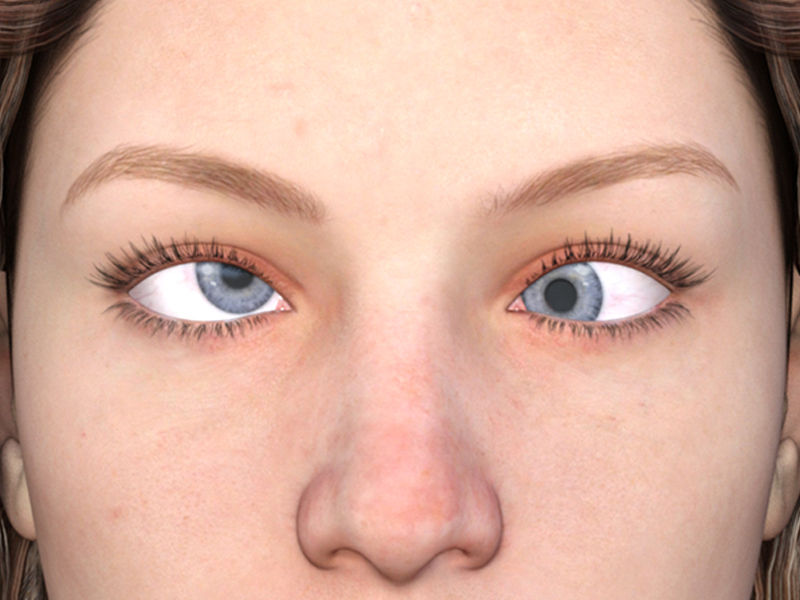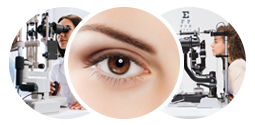Lazy Eye (Amblyopia): Causes, Symptoms, Diagnosis, and Treatment
Lazy eye, medically known as amblyopia, is a vision disorder that occurs when one eye does not develop proper visual acuity as compared to the other. It is the leading cause of vision impairment in children and can persist into adulthood if left untreated. Early detection and intervention can significantly improve outcomes. This article explores the causes, symptoms, diagnosis, and treatment options for lazy eye, along with insights into its long-term effects and management strategies.
Causes of Lazy Eye
Amblyopia develops due to abnormal visual development during early childhood. Several factors can contribute to its onset, including:
-
Strabismus (Misaligned Eyes): When the eyes are not properly aligned, the brain may ignore input from the misaligned eye to avoid double vision, leading to amblyopia. Strabismic amblyopia is one of the most common forms of the condition.
-
Refractive Errors: : Significant differences in prescription strength (nearsightedness, farsightedness, or astigmatism) between the two eyes can cause the brain to rely more on the stronger eye, weakening the other. This is known as anisometropic amblyopia.
-
Deprivation Amblyopia: : Any condition that obstructs vision in one eye, such as congenital cataracts, corneal opacities, or droopy eyelids (ptosis), can lead to lazy eye if untreated. The longer visual deprivation occurs, the greater the risk of permanent vision impairment.
-
Genetics: A family history of amblyopia increases the likelihood of developing the condition. Genetic predisposition can influence eye alignment, refractive errors, and overall eye health.
-
Premature Birth or Low Birth Weight: Premature infants or those with low birth weight are at higher risk for developmental vision disorders, including amblyopia.
-
Neurological Conditions: : In some cases, neurological disorders affecting the brain’s visual processing centers may contribute to the development of amblyopia.
Symptoms of Lazy Eye
Lazy eye often develops in early childhood and may not present obvious symptoms. However, some signs to watch for include:
-
Poor depth perception (difficulty judging distances)
-
One eye that wanders or appears misaligned
-
Frequent squinting or shutting one eye
-
Head tilting to see better
-
Difficulty with visual tasks such as reading or catching objects
-
Frequent eye strain or headaches
-
Favoring one eye over the other
-
An inability to follow moving objects smoothly with both eyes
Since children may not complain about vision problems, parents and caregivers should remain vigilant in observing these signs and schedule regular eye exams.
Diagnosis
Early diagnosis is crucial to effective treatment. Ophthalmologists use several tests to detect amblyopia, including:
-
Visual Acuity Tests: A standard eye chart or picture-based vision test to assess each eye’s visual strength. Young children may be asked to recognize letters, symbols, or images.
-
Refraction Test: Determines if significant refractive differences exist between the two eyes. This may involve using cycloplegic eye drops to relax the eye’s focusing muscles.
-
Cover Test: Involves covering one eye at a time to check for misalignment or eye dominance.
-
Dilated Eye Exam: Helps identify structural abnormalities such as cataracts, retinal disorders, or optic nerve issues.
-
Stereopsis Test: Evaluates depth perception, which can be reduced in cases of amblyopia.
The American Academy of Ophthalmology recommends that all children undergo vision screening at regular intervals, particularly before age five, to detect amblyopia and other vision impairments.
Treatment Options
Early intervention offers the best chance of improving vision in the affected eye. Common treatment methods include:
-
Corrective Eyewear: Prescription glasses or contact lenses help correct refractive errors and improve focus in the weaker eye. In some cases, properly prescribed glasses alone can improve amblyopia significantly.
-
Eye Patching: Covering the stronger eye with a patch forces the brain to use the weaker eye, strengthening its vision over time. Patch therapy duration depends on the severity of amblyopia and the child’s age, ranging from a few hours per day to full-time use.
-
Atropine Drops: Medication that blurs vision in the stronger eye, encouraging use of the weaker eye, often used as an alternative to patching, especially for young children who may struggle with wearing a patch.
-
Vision Therapy: Eye exercises and activities designed to improve coordination, focus, and tracking in the affected eye. This may include computerized vision training programs, puzzles, reading exercises, and other targeted therapies.
-
Surgical Intervention: In cases of strabismus or cataracts, surgery may be necessary to correct the underlying issue. While surgery alone does not cure amblyopia, it can help align the eyes or remove obstructions that contribute to visual impairment.
-
Neuromodulation and Newer Therapies: Emerging research is exploring brain stimulation techniques and virtual reality-based therapies to enhance neural plasticity and improve vision in older children and adults.
Prognosis and Long-Term Outlook
The earlier amblyopia is diagnosed and treated, the better the outcome. Treatment is most effective in children under seven, but improvements can still be seen in older children and even some adults with intensive therapy. Without treatment, lazy eye can lead to permanent vision loss in the affected eye, impacting academic performance, job opportunities, and daily activities requiring binocular vision.
New studies suggest that some degree of vision improvement may be possible even in adulthood, thanks to neuroplasticity—the brain's ability to adapt and reorganize visual processing pathways.
Prevention
While not all cases of amblyopia can be prevented, parents can take proactive steps to protect their child’s vision:
-
Ensure regular eye checkups from infancy, especially if there is a family history of vision problems
-
Address any signs of vision problems early, such as frequent squinting or eye rubbing
-
Encourage activities that engage both eyes equally, such as reading, drawing, and playing sports
-
Follow prescribed treatments, including wearing corrective lenses and completing patching or therapy as recommended
Conclusion
Lazy eye is a common yet treatable condition that, if detected early, can often be corrected with non-invasive methods. Regular vision screenings, especially in young children, play a crucial role in early detection. If you suspect your child may have amblyopia, consult an eye care professional for proper diagnosis and treatment to preserve and enhance their vision.


